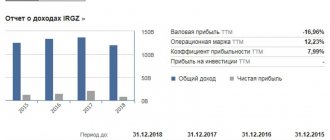The issue of shares in a joint stock company (JSC) ensures the formation of the authorized capital (AC) of an enterprise of a given organizational and legal form, to the extent of which it is liable to its creditors. In this case, the issue of shares can be carried out both during the creation of a legal entity and in the course of its activities. The shares themselves can either be distributed among the existing shareholders of a business company, or placed by subscription (i.e., be available for purchase by third parties).
What it is?
The issue of shares involves the issue of securities that are placed on the market.
An issue can also be called the process of distributing securities between investors, which allows owners to receive income from investments in bonds and shares of a company.
For the companies themselves, the issue of shares is beneficial for a number of reasons - this process increases the authority of the organization and attracts a new flow of financial investments that can be used to expand and modernize work processes. Moreover, the procedure for going through this process for the state. institutions and private companies differs significantly. Initiation of securities from private owners is carried out by the shareholder board. And Mr. institutions operate through government loans.
Advantages and disadvantages of issuing shares by a company
Securities are issued to obtain additional capital.
Advantages:
- At the organization stage, the necessary capital for start-up is planned, then, with additional issuance, proceeds are provided for development.
- Funds raised are not subject to tax for the issuer.
- Finance from the sale of shares is not borrowed funds. There is no interest payment on the loan, no control by third parties.
- The primary cost of securities usually includes the costs of issue and a percentage of profit, immediately making money on the sale.
- With the help of a block of shares, you can attract the right people to the board of directors, receiving a government lobby.
There are few disadvantages:
- Long emission path.
- The state regulates every step by law. If inaccuracies are discovered, the registration of the issue will be refused, obliging the issuer to compensate the shareholders for damages.
Kinds
In general, there are not many types of emissions - there are only two.
They are divided into primary and secondary. But there are an order of magnitude more types of accommodation, and everything is not so simple.
But first things first:
- The primary issue, as can be logically understood from the name, is the first issue of securities. Moreover, the first, as a phenomenon, should not be preceded by anything related to the issue of shares or bonds, no matter what type they are. The only exception can be considered the situation when the company's shares have already received a quotation on the stock exchange, but the issuer has decided to issue preferred securities. Such additional issue of shares is also considered primary, but relates only to the preferred type.
- Secondary (additional issue of shares) is any repeated action in relation to the issue of securities.
The issuance procedure can be carried out through subscription, distribution and conversion. To understand the logic of these procedures and identify the differences between them, it is necessary to become more familiar with each of the definitions. This will be discussed in more detail in the next chapter of the article.
Issues of shares can be carried out with the process of circulation of securities that were issued in documentary or uncertificated form. It is acceptable for them to indicate the name of the owner or bearer.
For what purposes is an additional issue of shares carried out?
The most obvious purpose of an additional issue of shares is to obtain “free” money for further business development. What does "free" mean? This means that the money received from the sale of additionally issued shares does not have to be subsequently returned to anyone and no interest has to be paid on it (as, for example, when issuing bonds or when taking out a loan).
Sometimes there is an urgent need for money (to modernize production, expand activities, etc.). At the same time, banks are not always ready to provide a loan or agree to do so, but on rather unfavorable terms. In this case, in order to stay afloat, there is often no other option but to issue additional shares.
Often an additional issue is carried out against the backdrop of a revaluation of the company's shares (when the company's market value exceeds its book value). Such revaluation can be diagnosed quite quickly by looking at such basic multipliers as, for example, P/B, P/E.
There are also cases when an additional share issue is carried out in accordance with the requirements of the law. For example, banks are forced to resort to it in cases where the minimum allowable amount of authorized capital for them is increased by law.
And finally, this procedure is often carried out with the aim of consolidating the authorized capital and concentrating the management of the company in the hands of a group of majority shareholders. According to the letter of the law, each shareholder has a preemptive right to repurchase newly issued shares according to the share that he currently owns. Most of the share capital is diluted between a huge number of small shareholders, and not all of them will exercise their right to purchase additional shares. This is what gives the majority shareholders the opportunity to buy them out, thereby increasing their shares in the company.
Placement methods
At the moment, the following types of placement of securities, bonds and shares are known and widely used:
- Subscription - by subscription, sales and purchase agreements can be concluded, as well as documents can be placed. This type of document, in turn, is divided into open and closed type. According to the rules of closed subscriptions, they can only be purchased by certain investors, the list of which is determined in advance. Open subscriptions can be purchased by anyone after the company announces the issue of new securities. This should happen in a general manner and the issuer undertakes to make the process public.
- An allotment is a type of private subscription in which the distribution of bonds occurs among a specified list of people. But, unlike the above method, the list of shareholders is not pre-established. Another fundamental difference lies in the fact that this process applies only to bonds, and shares cannot be distributed according to this principle. The process can be carried out both during the formation of a joint stock company and as part of a bonus program.
- Conversion is the process of placing securities that are not sold, but exchanged on terms that were previously agreed upon.
In total, only two of the above terms are relevant for the placement of bonds - subscription and conversion. Both distribution and subscription with conversion can be applied to shares.
Stages
The standard procedure for issuing securities includes the following sequence of actions:
- making a decision to perform this procedure;
- obtaining approval for release;
- registration with government authorities for release;
- placement and transfer of securities to primary holders;
- provision of results or reports on the registration of securities to government authorities.
In some cases, exceptions or differences from the standard procedure are provided.
For example, if there is a reorganization of legal entities (merger, division or transformation) or a joint stock company is just being established, then the procedure must be performed in accordance with the following sequence:
- making a decision on the execution of the process;
- placement of papers;
- obtaining approval;
- registration and provision of a report on the issue of securities with government agencies.
It is important to remember that there is criminal liability for violation of rules and abuse of the issue of securities in the Russian Federation.
Development of a prospectus
There is an official document called a prospectus.
It is prepared by the issuing company and then approved by the board of directors. The prospectus contains information not only about the securities, but also about the issuer itself. The prospectus has a dual role - it is both used to stimulate sales of securities and also provides all the necessary information about the company. Thus, the prospectus must simultaneously contain both positive information to attract new investors and describe risks in order to maintain a transparent policy.
In total, the prospectus contains the following information:
- a complete description of the organization and its business;
- type of papers;
- the amount for which the securities were issued;
- purpose of collected funds;
- contact details of the company - its address, mail and telephone numbers;
- The site of the company.
It is also necessary to include risk factors:
- the possibility of unfavorable developments and loss of financial profit;
- information about the need for additional funding;
- decrease in income;
- splitting shares (reducing profits from investments);
- seasonal or other specific changes in business;
- competitiveness;
- dependence on customers, suppliers, performers or other factors;
- the impact of the work of executives or managers;
- availability of licenses or binding contracts;
- the impact of the law on the activities of the organization;
- changes in the organization's work processes, the impact of technology.
And although the company must adhere to a transparent policy, it is not necessary to provide information that the funds raised will be used to pay off debts or performers. It will be much more useful for investors to learn about the prospects for the company's development, its mergers and further acquisitions.
It is also necessary to provide detailed information about the underwriters and the distribution of securities. A detailed description of the company's activities with a description of all processes is welcome.
The prospectus may contain:
- business plan;
- vision;
- impact on domestic and foreign markets;
- research expenses;
- relations with legislation;
- legal features of the company’s activities and possible issues that may arise in the future.
In the prospectus, you can openly provide information about assets, profits, expenses, features of functioning in the market, differences from competitors, etc. If there are branches and related organizations, then you can indicate information about this.
There must be clear transparency when providing financial information. Providing incorrect information may result in criminal penalties.
And although this part of the prospectus is one of the most complex, in general the following information can be provided:
- audit for the last 3 years;
- reports on income, expenses, financial flows, changes in the joint-stock company;
- selected data on financial activities for the last 5 years;
- about completed or planned acquisitions over a period of up to 3 years;
- information on payments to staff and executives.
Regarding information about company employees, it is allowed to use and provide the following data:
- experience of directors and executives;
- the amount of remuneration for their labor and the nature (availability of bonuses, incentives, stock options);
- availability of distribution of shares between persons holding management positions;
- compensation for founders.
This information is necessary so that investors can rely on the professional skills of management and their previous work experience. This will help predict the further development of the company and predict behavior in crisis situations.
The results of the work, as well as the provision of a comparative analysis of reports for each period with explanations, will help future shareholders identify the presence of certain trends in business development. A large amount of detailed information will help eliminate the factor of uncertainty and give investors confidence in the correctness of the decision made to invest their financial resources. It is also necessary to provide information about the liquidity of the organization. When providing information about the company's capital, you can mention planned expenses and sources of profit.
Procedure for regulating additional issue of shares
The decision of the authorized management body of the joint-stock company to increase the management capital is the basis for the additional issue. The documented solution should include:
- The number of ordinary and preferred shares of each type to be placed.
- Options, available methods of their placement (by distribution between shareholders, through subscription, conversion).
- The cost of placement (either the procedure for determining it, or a note that the procedure will be established by the relevant management body before placement).
- A form of payment for issued shares that will be placed through subscription.
- Other accommodation conditions may be included.
Important!
The placement price, as well as the procedure for determining it, is established using the provisions of Art. 77 Federal Law of the Russian Federation No. 208 .








